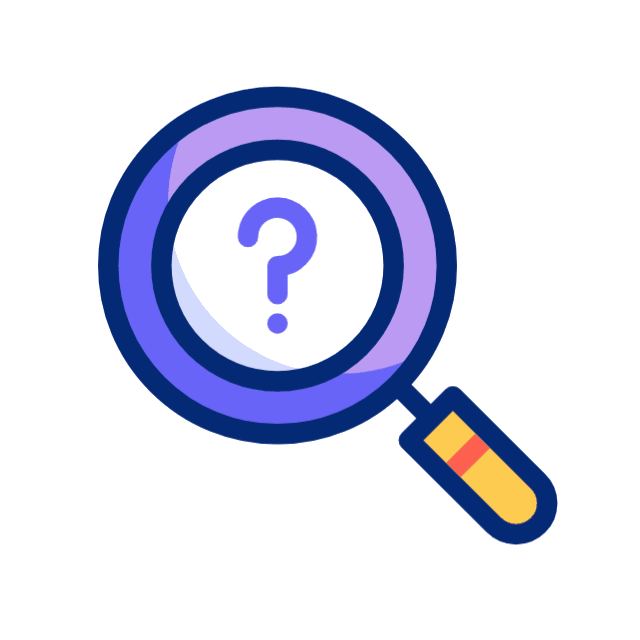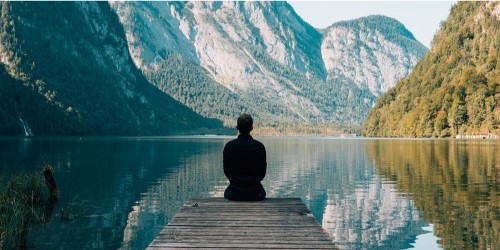
Tricia Eastman is a Traditional Mestiza Medicine Practitioner with over 10 years of experience. She has curated plant medicine retreats worldwide where legal, facilitated the psychospiritual program with ibogaine and 5-MeO-DMT at Crossroads Treatment Center in Mexico, and worked with special operations veterans at Mission Within.
An initiate of Bwiti Fang tradition from Equatorial Africa with a decade of study in iboga, Eastman founded the nonprofit Ancestral Heart, supporting indigenous-led biocultural stewardship and Traditional Knowledge preservation. She has taught at Stanford school’s Psychedelic Design program for three years and advises on psychedelic policy at federal and state levels.
How did your mestiza heritage and initiations in the Bwiti tradition shape your approach to bridging indigenous wisdom with modern global issues?
My mestiza heritage flows through my mother’s ancestral roots deep in the cultural melting pots of Oaxaca and Jalisco. My great-grandmother, Jesus was introduced to Santeria bringing Curanderismo, Catholic, African animist traditional practice together. When our family crossed the Texas border into the US, great- grandmother Maria was called a Bruja or witch, so her and my grandfather became more secretive about their practices, as did many indigenous peoples.
For Killer Whales, each pod is adapted to its own unique environment and has a set of principles passed down through the grandmother matriarch Orca to ensure the family’s survival. This reminded me of my grandmothers and my mother Annette, matriarchs deeply connected to nature, teaching me how to sew, create art, cook, be a steward of the Earth, tend a garden, and maintain a spiritual life. Despite ancestral wounds, it was these primordial principles and connection to nature which gave my family the power to transcend great trauma and suffering.
My Bwiti initiations confronted me with profound pain, forcing me to examine wounds I’d avoided and abandon Western comforts. Through challenging tests to overcome fear and cleanse trauma, my reverence grew for traditional knowledge protection and for all those that fought to preserve these practices in the face of colonialism. I felt a sense of duty to my tradition and to my ancestors.
I now navigate between worlds—honoring sacred ancient wisdom while engaging with technological advancement. Creating a peaceful world requires respectful collaboration with Traditional Knowledge Holders. This happens through delicate relationship building, engagement, and permissions—one step at time. Though technological progress continues, I envision a future where we move forward with greater integration, unity, and guided by Indigenous Elders’ wisdom. Humanity needs these “Orca Grandmothers” to make it through the turbulent times that we are in now.
What inspired you to create Ancestral Heart, and how do you ensure respectful collaboration with indigenous communities in your work?
My journey with Ancestral Heart began in 2018 when a guiding voice—what I call the Ancestral Heart—came to me with a mission: to uplift the voices of ancient wisdom. Initially, the guidance guided me to write my book, Seeding Consciousness, which is finally published years later.
In 2019, the Ancestral Heart voice took the vision further instructing me to bring the Zulu tribe to Burning Man. Unsure about this message but intrigued, I asked for a sign and received not one but three clear affirmations. It was shortly after that I realized Ancestral Heart was meant to be a container for these divine instructions. Rather than forcing a formal structure, I have spent the last six years carefully listening and supporting these specific messages as they emerged and were confirmed.
Since 2015, I had been working closely supporting the Koggi Kaggaba and Bwiti but in giving life to a vehicle that this work could flow through, it has allowed me to work in a more global arena at events such at World Economic Forum, G20, Stanford University, and to raise over one million USD for indigenous-led biocultural stewardship.
This work has to start with humility because you can’t have any preconceived ideas going into it. You have to be in full service. The first way to engage is by connecting with wisdom keepers who travel globally, seeking proper permissions, and following spiritual protocols. Every tradition has its spiritual protocols. It’s crucial to receive a proper invitation from an elder and respect before going to indigenous communities. The most effective work happens through established, trusted relationships. Collaboration is key. At Ancestral Heart, we work alongside dozens of organizations with established relationships that have built trust and understanding. Find and support organizations doing humble, protocol-respecting work.
This isn’t about predetermined ideas, as I said earlier, but about genuinely asking: “How can we support you?” In Kogi Kaggaba tradition, important divination rituals and Pagamentos (offerings to the Earth) performed by the Mamos (elders) initiate this process. Once the instructions are received, the work is carried out step-by-step. We are not doing the work, we are carrying out the plans the elders have received.
Could you share your vision for the HU Azores retreat center and how it will serve as a space for dialogue on the metacrisis?
The inception of HU is intrinsically linked to a powerful encounter with Kogi Mamas Evangelist and Mama Luis in 2018. The Kogi people of the Sierra Nevada are known as the protectors of water and ley lines that maintain balance on Earth. During this meeting, the Mamas shared a profound insight about modern living versus the Kogi way of life.
They pointed out that modern society lives in boxes – our homes, phones, computers, and even coffins are all rectangular but the universe thinks in spirals. In contrast, the Kogi build their homes to mimic nature, creating a replica of the universe where everything outside is represented inside. This creates a sacred space of connection, unlike the disconnected spaces of modern apartment living.
After repeatedly listening to the conversation with the Kogi that I recorded, a clear message emerged: we are living in the wrong type of housing. How can you think outside of the box, if you are in one? The structures we inhabit are the biggest interference in humans accessing their own innate divine nature. The path to becoming truly connected to our souls, our higher selves, or source, begins with the structures we live in. The first part of HU is the architecture that is inspired by the Kogi Original Houses of thought, cave-like structures that connect us to ourselves and nature.
During one of my daily meditations in 2019, I received the next part of the message– to establish a center in the Azores (which I had never been). Upon inquiring about the name for this center, I distinctly heard “HU.” Subsequent research revealed that HU has roots tracing back to ancient Egypt. It is associated with the sound made when wisdom enters an initiate, often referred to as the “tongue of Thoth.” The concept of HU involves the transfer of wisdom, which can occur between two individuals, in nature, through the use of plant medicines, or during initiation ceremonies.
HU is an ancient-meets-modern process and context for weaving the ancestral science of encountering self and spirit. The modern absence of ancestral knowledge frameworks for personal and spiritual growth has led to planetary instability, leaving us imbalanced and disconnected from self, nature, and spirit. Wellness begins within and through self-knowledge; we offer the conditions to foster personal and collective illumination and provide sensemaking in times of societal sea change.
We need to reclaim our timeless roots in order to aid humanity during this pivotal time on earth. We envision a planet of individuals who are connected to their timeless identity, intuition, creativity, and gifts and are living meaningful and fully expressed lives, throughout all strata of leadership, in service to life. HU will serve as a place of emergence, where indigenous elders, leaders, all those ready to rise for the occasion to come together for healing and collaboration.
In what ways do you see plant medicine and ancestral wisdom offering solutions or guidance in today’s world, as explored in your book Seeding Consciousness?
Seeding Consciousness serves as the components that prepare us to be initiated and the framework of how one operates in connection with oneself and nature. It was timely for Inner Traditions published the book right when Ibogaine is “flood dosing” the headlines, as it is essential resource those interested in learning about iboga or ibogaine.
Initiation is required to understand the unconscious mind. An initiator can only take a person as far as they’ve gone within themselves, which means those that are uninitiated can take a soul, not very far. The other part is that the soul must be ready. A soul cannot go anywhere that is not willing to go. This is why it takes a minimum of 10 years of training to become a Nima in the Bwiti Tradition.
The concept behind initiation is protocol that increases the likelihood and prepare one for having a mystical experience. A mystical experience can be likened to a death or rebirth type of experience that involves you essentially dissolving your identity, your sense of who you are, where you are, and merging with a greater reality. This is what the science is showing, people having mystical experiences on psychedelics have profoundly better healing outcomes, no matter the condition. What really shifts, after that experience, is a fundamental shift in how you see yourself or aspects of your life.
As my initiatic father of Bwiti Atome Ribenga said, “A mystery is knowledge that is revealed only to those who have been specially prepared to receive it, not something unknowable or incomprehensible. The knowledge is there, but it should only be revealed, transmitted or communicated in detail to those who have been specially prepared to receive it, so that they can apply it wisely, without causing harm to others.”
Seeding Consciousness provides this understanding of moving forward in modern society, respectfully with psychedelics. It is useful for the novice just getting started, the psychedelic policy maker, the government official, or the advanced psychonaut because it is comprehensive and integrates understanding of current frameworks with traditional worldviews. I will say, it took me a great deal of time and conversations with the elders that I work with–to present this is the proper and respectful way, so I hope all that read it will take the same respectful approach in how they might engage with traditional knowledge.
How do you navigate the ethical complexities of the psychedelic movement’s growing influence on indigenous cultures and sacred traditions?
Grandmother Bernadette Rebeniot, who is now an ancestor, was the lead grandmother of the 13 indigenous grandmother council that was started in 2003. This is a quote from a letter Rebeniot helped draft “It is no longer okay for people to go into our forests and to take our medicines, patent them without our permission, and use them without their teachings”. There are many sanctions such as the United Nation’s Nagoya Protocol that protect plants and the traditional knowledge that they are connected to. There have only been a few indigenous groups that have filed cases against biopiracy, but now councils of Bwiti elders such as Maghanga Ma Nzambe are coming together, as are other groups such as Shipibo to be a unified voice against corporate interests.
In 2017 another council of indigenous elders formed called The Twelve lead by Master Atome Ribenga, also an ancestor now, and Nima of the Bwiti Fang. I find it interesting the both Atome and Bernadette were leading the way when they are both Bwiti, which was much less known in the world in their time. Both felt very passionate about the preservation of sacred medicines for future generations. Indigenous-led Biocultural is essential for the preservation of traditional knowledge, the medicines, and ecosystems connected with them. 80% of the biodiversity of our planet is safeguarded by indigenous peoples. It is time that we listen and work together.
True whole person and collective healing cannot happen for humanity in reductionist ways, disconnected from nature. Grandmother Bernadette once shared a vision that she saw medical doctors working alongside traditional practitioners. I believe we are at a point in time where this is possible.
Order Seeding Consciousness on Amazon: https://a.co/d/7lwYBCu


